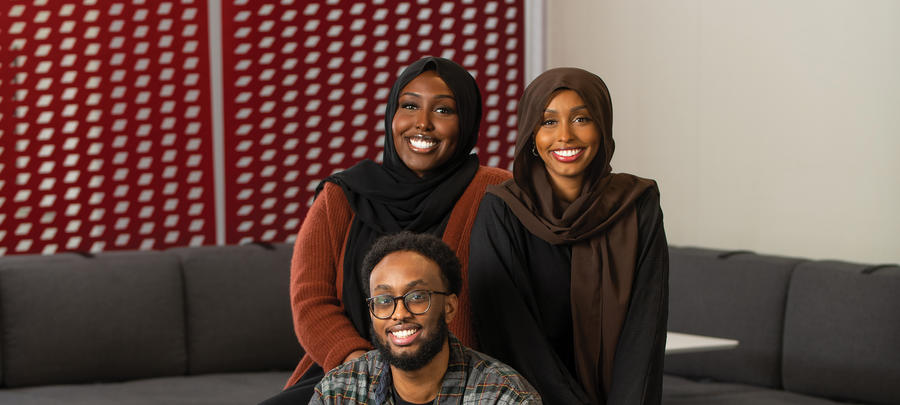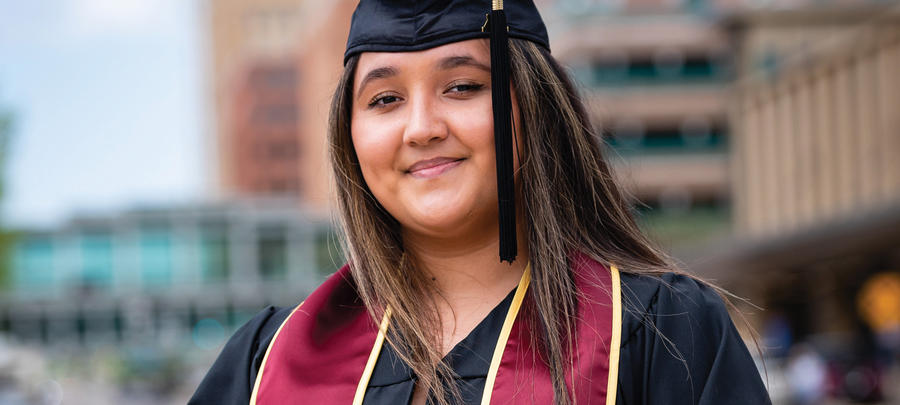
BSHP Alumni Profile: Finding Her Career, With Heart
Khosiyat (Hosi) Mamatraimova '22 started her new career as an echocardiographer at Mayo Clinic in August 2022. Just a handful of years prior, however, she was on the other side of the globe in her home country of Uzbekistan.
When Hosi was just 16, her mother passed away, and she and her sister moved to the United States to be with their dad, who lived and worked in Minnesota. Initially, their dad sought to ease the sisters’ transition to the U.S. by relocating to California. “He thought Minnesota would be too cold for us, but we loved it. I love the snow,” Hosi says. After a few months, they moved permanently back to Minnesota, settling in Minnetonka.
Speaking little English – her primary languages were Uzbek and Russian – Hosi’s transition to school in the U.S. was initially rough. But she persevered, graduating high school and mastering English in the process. Hosi began attending classes at Normandale Community College in Bloomington, with a focus on business. That never felt like the right fit, so Hosi briefly switched to nursing, then back to liberal arts to get her Associate of Arts degree. Meanwhile, she attended a job fair, hoping to find a flexible work schedule that meshed with her school schedule. There, she connected with a private nursing home looking to hire a caregiver for women with physical and mental disabilities.
As an in-home caregiver, Hosi would often bring her patients to medical appointments. Little did she know that this experience would lead her to her new career. “One of the girls [I cared for]had Down syndrome and a lot of heart issues,” Hosi says. “I used to take her to appointments, including cardiology. I found that I loved learning about cardiology and would ask questions at her appointments.” This led Hosi to ask her counselor at Normandale about medical programs, outside of nursing, that focused on the heart. The counselor introduced her to the Bachelor of Science in Health Professions (BSHP) echocardiography program at UMR. “Echocardiographers take sonograms of the heart, prepare reports and work closely with cardiologists to help identify heart issues. She told me it was a competitive program, but if I could get the grades needed, she would help me get in.”
Soon after, Hosi toured radiography and sonography during an open house event at UMR. “I just loved how the Mayo Clinic system worked,” she remembers. With her heart set on echocardiography, she applied and was accepted. “I had never taken a class at UMR, so it was tough at first,” Hosi remembers. “Cassie in admissions helped a lot. And some of my classmates who had been at UMR for two years already helped me figure everything out.” Complicating matters, Hosi and her classmates started their new program in 2020, right in the middle of the COVID-19 pandemic.
As the world went virtual, so did much of education. This program, however, didn’t do away with in-person learning completely, much to the gratitude of the students. “We did all classes online, but scan labs and clinicals were in person. We were a class of only nine students, so we were able to meet in person, which was essential to learning,” Hosi believes. “One of the great things about the program is that you start clinicals almost immediately. It was so helpful getting that experience in the clinical setting, even if you’re just rooming patients at first, to feel more comfortable in the role. If you learn something from a book or in the classroom and then you see it in the clinic, it all makes sense.” Not only were the students getting real-life experience, they were learning side-by-side from the cardiac sonographers. “You don’t just learn from the class teacher, you actually learn from the cardiac sonographers who are doing it day in and day out.”
As Hosi progressed through the program, she and the other students were encouraged to actively use the skills they learned to prepare them for their careers. “By the time we graduated, especially during senior year, we were allowed to be more independent. You would do the whole test by yourself (supervised), talking to the cardiologist on your own and getting the patient on your own. This forced us to not depend on another person to do it for us. By the time I started my job, I knew the process. There was still more to learn, of course, but we knew everything we needed to know to start the job and be comfortable in the role. We were prepared to recognize things we needed to look more closely at, or issues that we may encounter.”
Hosi graduated from the BSHP program with a certificate in echocardiography from Mayo Clinic School of Health Sciences in May 2022, and started her new job just a few months later. Settling into her career at Mayo Clinic, she feels at home. “I’m in an apartment now, living near classmates in the same apartment complex. I’m excited for winter to come. I love downhill skiing. I usually get a night pass from Welch Village and go after work and ski late into the night. Sometimes with friends, sometimes by myself. It is peaceful and fun.” While the future may hold more education — “at some point I will go back and get my Master’s degree” — for now she has found her career, with heart.
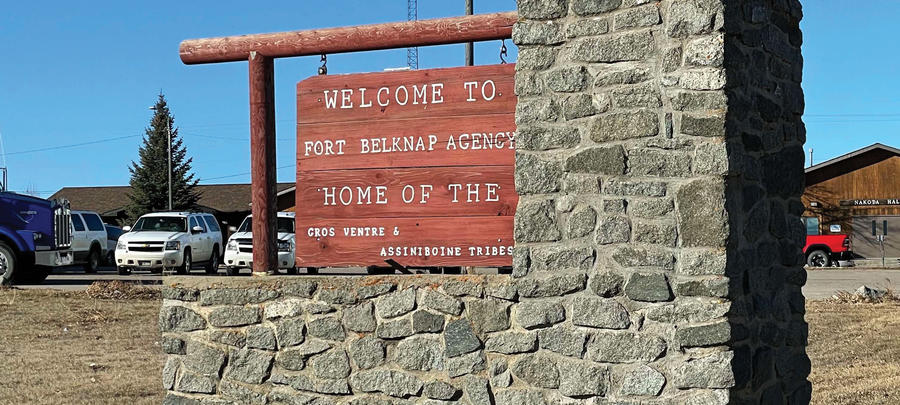
BSHS Alumni Profile: Katie Nelson
Katie Nelson '15 didn't plan to attend The University of Minnesota Rochester,
but after a bumpy freshman year at a different university, she returned home to Rochester to be closer to her support system. She knew she wanted to work in health care, so attending UMR was not only convenient, but because of the courses offered at UMR, it also made sense.
She kept her career options open; however, the decision became clear when, in her junior year, she became the primary caregiver for her grandmother and grandfather. Katie spent a lot of time by her grandma’s bedside in the intensive care unit, and witnessing the nurses care so skillfully for her favorite person reinforced that nursing was the right route to take.
“My grandmother was a nurse,” Katie says, “but she never pressured me into following in her footsteps. When I saw her nurses taking such good care of her, I knew it was the right path for me.”
In one of the last conversations Katie had with her grandmother, Katie shared that she had decided to pursue a career in nursing. Her grandmother told her that she’d always known Katie would end up becoming a nurse, but that she’d wanted Katie to figure things out for herself.
Coming into UMR as a transfer student, Katie didn’t know what to expect, but, unfortunately, the transfer didn’t go smoothly. Katie credits former Student Success Coach Perry Telander, MS as the pivotal person championing her towards graduation.
“When things started falling apart, when my grandparents got sick, I wasn’t sure if I would be able to stay on track and graduate,” Katie says. “Perry helped me figure out a plan, and he saw me through to the finish line.”
Not surprisingly, Katie now encourages transfer students to seek out the mentorship of a trusted UMR faculty or staff member – early and often.
“Find your support person, whether they are faculty or staff, as you’re trying to get your feet under you and navigate a new school,” Katie says.
Katie is now a nurse at Johns Hopkins Health System and a PhD Candidate at the Johns Hopkins School of Nursing in Baltimore, Maryland. While she had stepped away from the bedside for a bit to focus on her studies, Katie returned to work when the COVID-19 pandemic hit; she understood there was a great need for experienced nurses, so she stepped up to help. In order to keep somewhat of a work-life balance, Katie works in the float pool, picking up shifts in various areas as her schedule allows.
Katie’s dissertation research is based in Fort Belknap, Montana, where she works collaboratively with the A’aniiih (Gros Ventre) and Nakoda (Assiniboine) Peoples. Located approximately 40 miles south of the Canadian border, the Fort Belknap Indian Community relies heavily on their one Indian Health Service unit and tribal public health nurses to provide comprehensive health care to a population of over 8,000 people.
“We are conducting a community-wide needs assessment to determine what types of barriers family caregivers face in Fort Belknap when caring for a loved one with a serious, life-limiting illness,” says Katie. “We’re also asking them what additional types of support they could benefit from, so that the public health nurses can tailor the services and education they provide to ideally help keep people at home on the reservation at the end-of-life.”
In the course of developing her relationships with the public health nurses, Katie learned how distressed they feel when doing home visits for people with serious illnesses.
“I saw the same thing mirrored during my time working as a nurse at Mayo Clinic in Rochester,” Katie says. “We had Native Americans come from tribes all over the Midwest region. They had poor pain management, and often, [even while] imminently dying, they would travel off their land for help at Mayo Clinic. However, working in a Western-oriented setting, our protocols and procedures clashed with what they needed to support their traditional, Indigenous ways of life.”
Practices like smudging – the sacred smoke created from burning medicinal or sacred plants and washing it over bodies – was not allowed (at the time) because of building codes or a lack of ventilation in buildings.
“These were some of the most distressing experiences of their lives,” says Katie, “and not being able to participate in their traditional, cultural rituals perpetuated this complicated grief and trauma that is so prevalent among many Native American communities.”
Katie hopes her dissertation work will help develop infrastructure across Indian Country so that people can be on their land, surrounded by loved ones, when their time comes to cross over. “We know that most people want to die at home, and that is no different in Indian Country. They should not have to travel hundreds of miles for care, which is often stressful, traumatic and generally chaotic for family and loved ones.”
She plans to complete her final dissertation defense in March 2023.
Katie didn’t always want to work in the health care field. In fact, she wanted to be a mail carrier when she was growing up. However, she is glad that UMR was part of the journey that has led to her current work.
“Being a nurse is absolutely bonkers – no one day is ever the same, which I love. It’s been hard as the field has become more political in recent years due to the COVID-19 pandemic. However, working in this field, and with folks experiencing serious illness, has opened my eyes to many things, one of them being how finite our time on earth is,” says Katie, “and I try to live each day with that mentality in mind.”
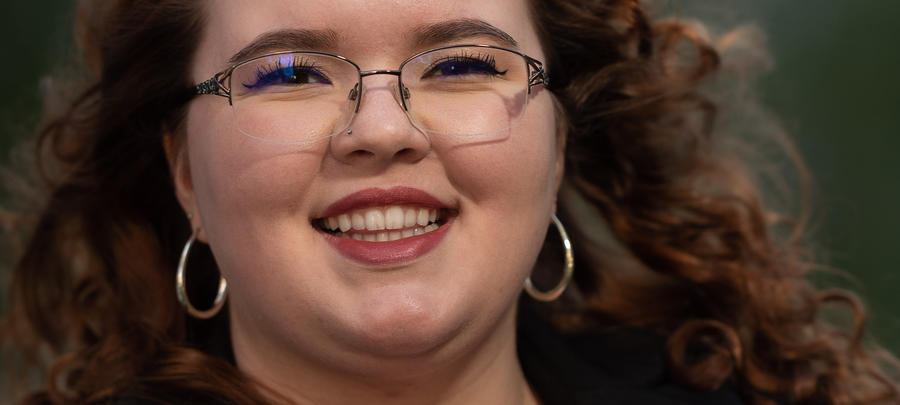
A Love of Sonography and Similar Backgrounds Unite Benefactor and Student
A passion for sonography brought Madison Nelson '23 to the University of Minnesota Rochester.
Her interest was sparked by two positive experiences with sonography while in high school. “My aunt was diagnosed with breast cancer, and one of the ways they diagnosed her was with a breast ultrasound that helped solidify her diagnosis. I also had a child development field trip and toured the maternity ward and saw an ultrasound in action.” Seeing those two important uses of sonography inspired her to learn more about it as a career.
“Sonography is using physics concepts I’ve learned about, and applying those concepts to help diagnose patients. It’s taking an abstract concept and making it into something physical.”
The University of Minnesota Rochester’s Bachelor of Science in Health Professions program interested her because of its strong sonography program as well as its educational collaboration with Mayo Clinic School of Health Sciences.
“When I toured the campus, it just felt right.”
Even though she loved UMR, there was still one big obstacle in her path: Madison was solely responsible for paying for college. Then, shortly after her acceptance to UMR, Madison learned she had received a scholarship, which would support her through every semester of the program as long as she maintained a full course load and kept her grades up. This substantive scholarship, in addition to some smaller scholarships, covered the full cost of tuition and board, allowing her to focus entirely on her studies. “When I first started, I wasn’t expecting to get the scholarship,” Madison says, “but receiving it was such a huge gift. I’m so thankful for it every single day. It makes my life so much easier. I’m able to put all my energy and effort into school rather than work or something else.”
The scholarship’s benefactor, Claire E. Bender, MD is a renowned radiologist who helped found UMR’s Bachelor of Science in Health Professions program. She served as Dean of Mayo Clinic School of Health Sciences and has worked at Mayo Clinic for 40 years. She is now professor emeritus in Mayo Clinic’s Department of Radiology and still practices in radiology. “I have always believed that the education of an individual is the best investment anyone can make,” Dr. Bender says. “I was blessed to have parents who believed in this. I watched my parents not only support my siblings and myself, but others. And I observed their genuine joy in doing so. Thus, I have tried to keep paying it forward for others.”
Witnessing her parents’ commitment to supporting students in post-high school education, whether at a technical college or a four-year college, sent Dr. Bender down a similar path decades later. “When I became dean of health sciences, I took that thought a little bit further, and in my time as medical director for radiography, I never, ever, saw a student have their education or training taken away from them. You always had that foundation.”
Throughout her tenure, Dr. Bender has helped many students and students to be at UMR and other universities and colleges with not just financial support, but also offering support as a mentor, coach and advisor.
Recently, when she contacted UMR about financially assisting a new UMR student, Dr. Bender was drawn to Madison’s story. “Her academic interests and her needs were demonstrated and met my expectations, so she was selected as the recipient of my scholarship. It is important to me that students study. To help them study by relieving some of that financial stress was extremely important to me. I really wanted to continue my connection with UMR in some special way.”
At their initial meeting, Madison and Dr. Bender shared their journeys and learned they had much in common. They both come from small farming communities and had many responsibilities at home while still excelling in high school. Madison describes her joy at realizing Dr. Bender related to where she was coming from: “She understood that background of raising animals while working hard in school to get good grades and being involved in as many extracurriculars as I could to give back to my community.” Madison also understood Dr. Bender’s intention for her. “She wanted to make sure I could focus on my academics rather than worry about how I was going to pay for it.”
For her part, Dr. Bender recalls encouraging Madison. “I said, ‘I just want you to study, study hard and do the best you can. I don’t want you to spend time working and worrying about money.’ I guess that’s really paid off.”
Madison has continued to excel and find inspiration in her benefactor’s example. “With my program I actually get to experience my clinicals at Mayo Clinic,” she says, “and not too long ago I came across a case that Dr. Bender had written the radiology report for. It was very cool to know she is a person at Mayo Clinic who felt it was important to help people get their education.”
Says Dr. Bender: “To have Madison be so successful, it brings me the greatest joy. I know she’s going to do well no matter where she ends up. She’ll not stop her learning.”
And just as she learned by watching her parents help students in need, Dr. Bender has now instilled that same sense of philanthropy in Madison. “Just the fact that she’s giving to me makes me want to pass it forward,” Madison says. “I want to be that person for another student in the future – help them go to college or further their education more than they thought they would.”
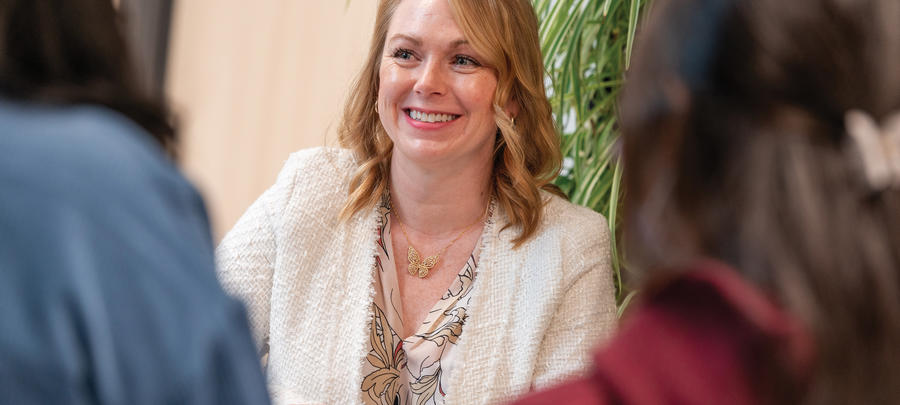
Faculty Profile: Cassidy R. Terrell, PhD
Ten years ago, UMR Biochemistry Associate Professor Cassidy Terrell was completing her PhD in biochemistry at the University of Texas, Austin. But while she’d started the degree planning to pursue an industry career in drug discovery research, she gradually realized that her heart was leading her down another path.
“I was a teaching assistant for every single semester, including summers,” Dr. Terrell says, “and that was my happy place. That was where I found the most purpose and joy – interacting with students, helping them with their coursework and trying to understand the concepts.”
Now, a decade later, Dr. Terrell has been awarded tenure at UMR after turning down two offers for tenure-track positions at other institutions. UMR, she says, clearly stood out over her other choices. She was drawn to UMR’s focus, the high-impact practices and tenured faculty doing research in student learning while still teaching in their disciplines — and she was drawn to the quality of the students.
“They are so ready to engage,” she says of her students. “Organized, very driven, motivated. They get it. Being at UMR means you’re getting skills in addition to content knowledge. In order to succeed in classes, they have to rely on each other. There always needs to be an awareness that every class is active, engaging and collaborative.”
Dr. Terrell is passionate about supporting women in STEM subjects. “Part of it is representation,” she says. “I want to give what I didn’t have. I went into graduate school, into a department where every single faculty member was male. For me, it’s about showing by example that as a woman in STEM, in biochemistry, who came out of a very male-dominant department, you can persist and succeed. You can get the grants, you can get the job, be the chair of the committee and you can have that seat at the table. I know you can, because I’m sitting at the table.”
While Dr. Terrell loves inspiring her students to see the wonder of the molecular world and participate in science, she also encourages them to find other joys outside the world of STEM. “Being successful in this role doesn’t mean it’s the only thing I like,” she says. “I’ve had students surprised to learn I like to go kayaking or I’m obsessed with plants and I like clothes. Some students think that to be a scientist means you only read scientific publications and spend all your time doing research and never struggle with these tasks. I do these things, and I do struggle with them, but it’s not all my time. I have many identities besides science. No one identity is all encompassing.”
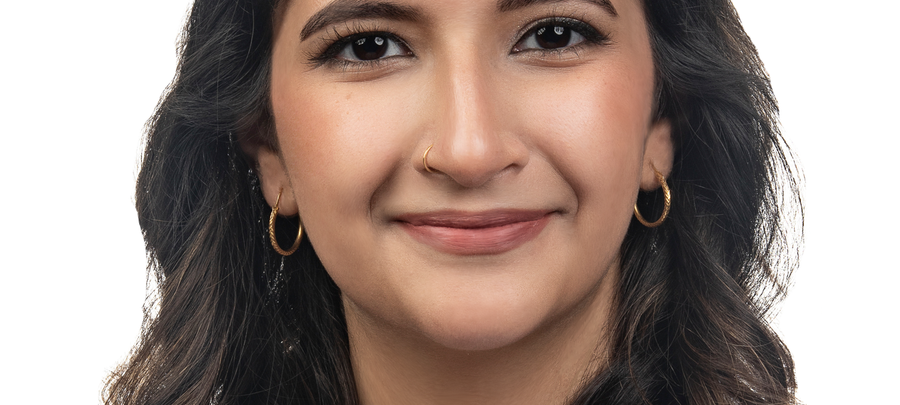
Health CORE Alumni Profile: Maha Siddiqui
Trailblazer Maha Siddiqui ‘19 doesn't shy away from breaking new ground.
As a member of the inaugural Health CORE Living Learning Community, she was among the students to help faculty and administrators develop this integral UMR program.
“In Minnesota and the Midwest, cultural and financial diversity, especially in health care, is lacking,” says Maha. “Health CORE was made so this group of students from different cultural, educational or financial backgrounds could help each other in a community that understands and uplifts each other.”
While not a first-generation college student, Maha is the child of immigrants to the U.S., and a Muslim woman who experienced health challenges in her youth.
As part of the inaugural class, Maha and her peers worked with the Health CORE Living Learning Coordinator to develop the program. They provided feedback, worked out challenges and helped shape the overall direction. “It was difficult because when you enter it, you would hope it would already be established, but we also got to help build the community in a way that we knew would work.”
In the process, she developed strong bonds with her fellow Health CORE members – something for which she is very grateful today.
She also credits the Health CORE community, and UMR faculty and staff, for helping her find the right career path for her.
Like many incoming UMR students, Maha started the health science program intending to pursue a pre-med track. Fortunately, she says, UMR’s program is designed to provide the best base for many different health care careers, and she could easily transition without delaying graduation. A key part to finding the right career, she adds, were the professional development courses required through the Center for Learning Innovation (CLI), which introduce students to a variety of career paths.
While Maha had reached what she calls a crisis point when she realized going to medical school was not right for her, the CLI classes had introduced her to pharmacy, and she soon discovered a passion for clinical pharmacy. Discerning the right path was challenging, she says, but she had immense support from staff, faculty and peers. “I was very unsure of what I was doing. Was I making the right choice? But I was overwhelmed by the support I received. It wasn’t just me making the decision myself.”
While she was researching pharmacy, her Student Success Coach, Jenn Hooke, connected her with UMR alumni in pharmacy, and a professor connected her with a dean of a pharmacy school so she could learn more and hear more firsthand experiences. Her Health CORE community of students also stepped in. “They told me what they saw in me that would make me a good pharmacist – I felt more confident in my decision because of that.”
Today, Maha is pursuing a doctorate in pharmacy from the University of Illinois at Chicago (UIC), one of the leading pharmacy schools in the nation. She feels solid in her career path, which she credits to her UMR education. “Coming to UIC, I was better prepared, thanks to my educational experience at UMR.”
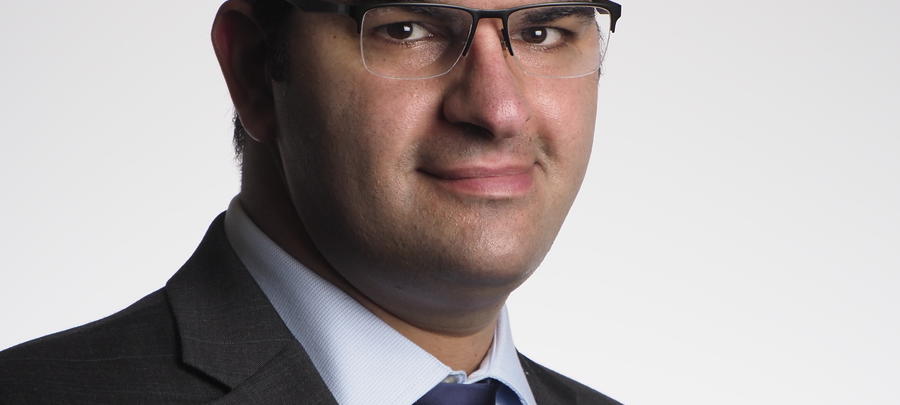
BICB Q&A: Zachi Attia
What year did you graduate? I finished the PhD program in May 2020.
What is your educational background? I pursued a PhD in Bioinformatics and Computational Biology (BICB) at the University of Minnesota Rochester and I have a masters in electrical engineering from Ben Gurion University in Israel, researching machine learning in the processing of bio-electrical signals.
How did you choose UMR’s BICB program? I was doing research at Mayo Clinic, and wanted to continue to a PhD while working full time. I heard from a friend that the BICB program provided flexibility and would allow me to work while pursuing my PhD.
For those unfamiliar with BICB, how do you characterize its approach to graduate work? Borrowing from another company culture, I think the best way to describe it is “freedom and responsibility.” The program gave me the freedom and flexibility to organize my classes and thesis work, but I had to be disciplined enough to follow through.
What is your current job? I am the Co-Director of Artificial Intelligence (AI) in Cardiology at Mayo Clinic. This includes leading a team of eight PhD-level engineers working to develop AI to detect and predict diseases. Our work is now in the FDA approval process and is commercialized by a Mayo Clinic platform company called Anumana.
How do you use your PhD? I am using it to do research and mentor other engineers and postdocs in our lab. I am also using some of the writing skills I acquired from the PhD program to publish papers and apply to grants.
What advice do you have for others interested in bioinformatics? The best way to learn, in my opinion, is to have a hands-on approach, and experience with research and writing code. Our work is very technical, so it is important to combine the courses and learning with real life experiences. There is a strong need for people to do this work. With open source datasets and online challenges, I believe everyone can find an internship if they would like one
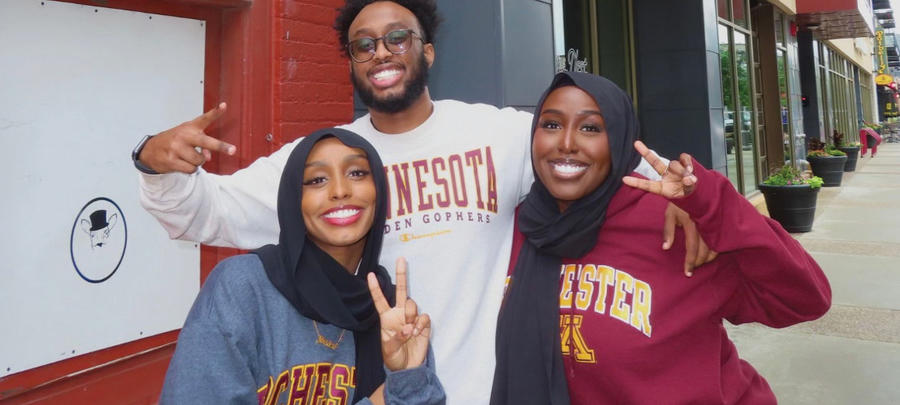
A UMR Family Affair: The Yusuf Siblings
Students feeling stressed around finals often want to blow off a little steam.
For the Yusuf family – Yaqoub ‘21, Yusra ‘23 and Yasira ‘24 – that meant getting together for sushi, the zoo, the mall and just hanging out for a day. It’s a favorite way for the three siblings to spend time together, and one of the best perks of coming to school together.
“I really enjoyed having my sisters there,” says Yaqoub, who completed the Bachelor of Science in Health Sciences (BSHS) program in 2021. “It definitely took away from feeling homesick. I was on campus alone for the first two years, and it felt different when my sisters got there.” Yaqoub is now on the West Coast at San Francisco State University. He is pursuing a master’s degree in biology with a focus on physiology and behavior, part of a National Institutes of Health (NIH) fellowship PhD bridge program.
Yaqoub is the first in his family to go to college. His parents and extended family – aunts, uncles, cousins – immigrated to the United States from Somalia more than 20 years ago to escape war and famine.
“Higher education was always expected and a standard for us,” he says of his parents’ intentions for him and his four younger siblings. “How to achieve that was something I had to figure out. Thankfully, I had mentors along the way that helped me through.” At UMR, he credits his Health CORE advisor, research advisor and success coach. “That was one of the benefits of a smaller school: You have one assigned coach. I met with mine often, very often, multiple times a semester – not just looking for next semester’s courses, but for multiple reasons. I had a great relationship with my advisors. They knew basically everything I was doing. They knew what my strengths and my weaknesses were and they knew where to develop my skills and which courses to recommend for me to succeed.”
Reflecting on his accomplishments and mistakes has given him the knowledge and experience to pass on to his younger sisters, who followed his path to UMR.
Yusra arrived two years after her brother and is on track to graduate in 2023. “We all have different routes we want to take within this degree,” she says of the BSHS degree, which encompasses the prerequisites required for numerous health care career pathways. She intends to pursue a medical degree and specialize in dermatology.
Her desire to become a physician goes back to childhood. “I was always close to my personal physician as a kid, and also through different health issues along the way. Talking with them, they were just so understanding. It goes deeper than being supported. They were in my shoes, at age 7, 9, 11. They were so relatable. In my mind as a kid, they were superheroes.”
Yusra toured other top-ranked schools when considering the best fit for her, not taking for granted that she would follow in her brother’s footsteps. But UMR rose to the top of her list. “It was the only school where I could confidently say the faculty and students knew each other by name. Everyone greeted each other. You can walk the halls and feel like family – no one goes unnoticed. It was the one place everyone was so well-connected and there to help you succeed. What school did I see myself best succeeding at? UMR.”
Her passion for helping patients was fanned in her sophomore year of college by working as a Personal Care Attendant (PCA). “I loved it. As a float PCA I worked with patients in pediatrics, hematology, even the ICU. I connected with patients throughout the whole hospital. One patient had an anxiety attack in the room, and I was able to talk with her and calm her down. This is where I belong, and these are my strengths.”
This past year, Yusra served as the president of the Rochester Student Association (RSA), UMR’s student government. “Making direct changes to the campus and school was really important to me,” she says. With her leadership, RSA set goals for the year and also tackled specific projects. After hearing frequent requests from students, for instance, they created a reflection space on campus. They also partnered with other student groups to hold events, worked with the local food pantry and looked into mental health resources available to students. “When I see a need for change in a particular area, I think it’s important to have conversations about it and break that ice,” Yusra says.
This year, Yusra will expand her worldview while studying health care abroad in Thailand, which she sees as a perfect way to capstone her UMR experience.
Yasira, the third Yusuf sibling, came to UMR one year after Yusra and is on track to graduate in 2024. Yasira knew she wanted to pursue a career in health care, and when both older siblings told her how much opportunity UMR offered, she jumped at the chance. And having those two siblings for support was especially helpful during her first year. “They set some steps for me. It was nice for them to say, ‘Oh no, don’t think it’s too hard, we all did it.’” And when they come together on one of their outings, Yasira says, they share what they’re learning about in their particular fields of study, much like they did growing up when they would share their different tastes in music and movies. “We found a way to bring each other into how we liked things,” she says. “Even though we’re different, we can still like the same things. We can help each other with our future professions. Whenever we need help, we know we can always be there for each other.”
She notes how pleased their parents are that the three siblings are together and can support one another, too. Like Yaqoub and Yusra, one of Yasira’s favorite family memories at UMR was a day during finals. “My older brother saw that we were all stressed, too busy in our schoolwork to focus on ourselves. He said, ‘Let’s go out to a movie and out to eat. Let’s take a break.’ That time away for ourselves, to hang out with siblings, even though we were busy and stressed [was so important]. When you find something you appreciate and like to do other than your work, it gives you more strength to keep going. You have to find something for yourself in this, otherwise you’re going to lose the thing you love in the work.”
And as her brother has gone on to the West Coast, and her sister will be heading to Thailand this spring, Yasira notes, “I’m just glad I got the opportunity to follow two amazing people’s footsteps and be able to continue our legacy as first-generation students.”
Truly, the UMR way of life has become a family affair for the Yusufs.
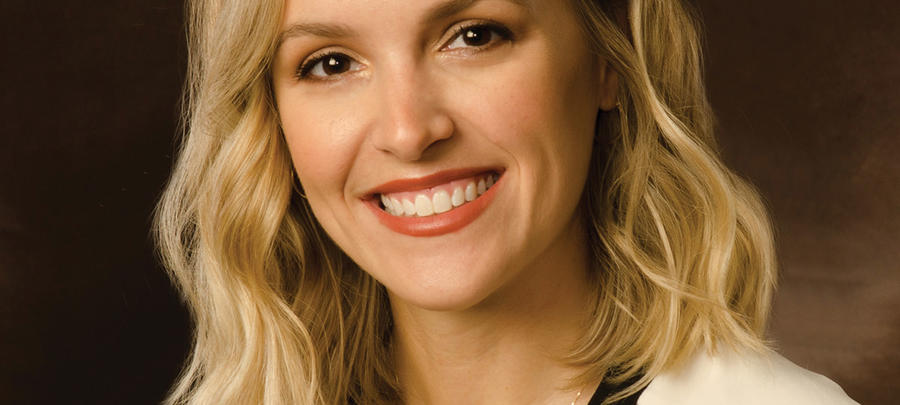
Pathway to Becoming a Physician
As the University of Minnesota Rochester continues to establish itself as a leader in training future medical professionals, a love for humanity is built into the undergraduate experience directly alongside the art of medicine. With innovative curriculum and teaching methods, staff and faculty support, extensive volunteer opportunities, and an abundance of resources available thanks to its collaboration with Mayo Clinic, UMR is truly situated to become one of the premiere training grounds for those looking to pursue medicine in many forms. While it is a long and often winding road to become a physician, these five individuals chose UMR to prepare them for the road ahead.
Same Medical Focus, Different Origins
While each of these five felt drawn to medicine early on, the driving forces behind their interests varied. For both Pal Koak and Misk Al Zahidy, their personal experiences with needing medical treatment shaped their trajectory in life.
“When I was younger, I had to go to the hospital a lot due to an illness, and that really inspired me to be a physician,” says Al Zahidy. “I wanted to be able to do the same thing that my physicians did to get me healthy again.” The care she received at an early age became a formative experience that influenced how she went on to navigate the world.
For Koak, his experiences as a child living with hemophilia in Kenya and observing the prevalence of bleeding disorders in a developing country and the limited treatments available to patients in Kenya compared to those in the U.S. cemented his medical focus.
“One experience that sticks out to me is from when I was seven in Kenya. I remember a family friend knocking on our door early in the morning, and she barged into the house holding her child in her arms. Through the pouring rain, she had rushed to our house in tears because her child, who had severe hemophilia A, was experiencing an internal bleeding episode, but she didn’t know what to do, so she came to my mom – the only other person she knew who had a child with hemophilia. To this day, that experience comes to mind like it happened yesterday. There are plenty of children in Africa who deal with bleeding disorders like sickle cell anemia, and their parents have no one to turn to. I hope to one day be one of those people these parents and children can rely on for care.”
For the other three, a natural cohesion of their interests and life experiences brought them to medicine.
“My mom was a nurse who did in-home nursing care,” says Victoria Ajayi “I loved seeing how much her patients trusted her, not just with their physical health, but also deep things that affected their health as well. I loved the sciences, but also wanted that type of connection that people had with my mom, that close connection of helping people, serving people. It really was a combination of things – patient interaction, thinking critically, exploring – that led me specifically to medicine.”
Hannah Elsenpeter was also influenced by a family member. “My grandfather was a physician and owned a small, community hospital in Albany, Minnesota,” she says “Because of this, I spent a lot of time at the hospital stopping by to visit him, going to my own appointments and attending community/hospital-affiliated events. Medicine was always a big part of my life in that sense. I was also always really fascinated with science. I have an inquisitive mind, and science was really the only thing that could satiate my curiosity, even as a child.”
For Bryar Hansen, it was his natural curiosity, coupled with a propensity for scientific research and a little Hollywood drama that really ignited the spark. “I always wanted to go into medicine, honestly from an obsession when I was young with the TV show ‘House.’ I spent a lot of time after watching the show looking up and studying the random diseases and pathologies. I recently found old homework assignments from elementary and middle school that showed that, even back then, I wanted to become a doctor.”
UMR, A Gateway to Medicine
When the time came to apply for undergraduate programs, the paths of all five converged at UMR. For all, proximity to home and proximity to Mayo Clinic were major factors in making their decision.
“Being from western Wisconsin, I chose UMR partly because of the location,” Hansen says. “Being somewhat close to my hometown made it easy to have a good family balance while I navigated the excitement and rigors of the UMR coursework. I also chose this school because I knew I’d be pursuing medicine, and what better place to start that journey than right next door to one of the top hospitals in the country? Being so close to Mayo Clinic helped me find research opportunities and physician mentors who helped guide me to where I am today.”
Koak agrees. “The proximity to Mayo Clinic and the relaxed, go-explore nature of UMR made it a no-brainer for me to apply to this school.”
“I could see [UMR] fostering me to be the physician I wanted to be,” says Ajayi. “This felt like the place I could get the experience I was looking for and still be close to home.”
Smaller class sizes offered by UMR were another big plus for both Al Zahidy and Elsenpeter. “What led me to UMR was the size of the campus and its connection with Mayo Clinic,” Al Zahidy says, “but I also learn best in smaller size classes and I wanted to be able to maintain those relationships that I had developed while volunteering at Mayo Clinic during high school.”
“UMR was quite an easy decision for me,” says Elsenpeter. “I knew I wanted to pursue a degree in science, and I already had solidified interests in health care. I thought it was the perfect opportunity to explore more careers in health care. I’m also pretty introverted, so the smaller class sizes were a big appeal to me. I also felt like my Student Success Coach (Perry Telander) was personally invested in my journey to finding the perfect career before I even committed to the school, so I knew I would have great support.”
These shared needs and goals drew them to UMR, and each is quick to say that they made the right decision.
Developing Educational Skills for Success
Part of the success of UMR graduates lies in UMR’s innovative educational structures that empower students to flourish in their career paths. “As many freshmen come to learn in their first semester, UMR does not run its classes like a high school, where the instructor lecturing to students suffices,” says Koak. “UMR has a flipped-classroom approach where, although you get the lectures, most work is done outside of the classroom to encourage students to seek clarification at JustASK. Although initially a rough adjustment, this approach has helped me prepare to one day become a physician because it has forced me to take control of my own learning, especially when the subject is hard.”
Ajayi agrees. “The resources are there to prepare for [a career in] medicine,” she says. “But you have to do the work yourself and pursue those resources.” Learning how to use all available resources and becoming self-directed learners sets students up for success, no matter their area of study. However, this is especially important for those applying to medical school, as those who pursue the physician path can attest. “Med school is a firehose of information,” Ajayi says. “You feel like you can’t learn enough. With good time management, a little bit of grit, and a little bit of luck, you make it through. If you decide that it’s something you want to do, putting in the time and effort is worth it.”
Elsenpeter echoes these sentiments: “Not only did I learn content in UMR classes, I was taught how to study and how to learn. These skills were directly transferable to medical school, where even though I took time off between undergrad and medical school, I felt more prepared than my classmates in medical school to study and keep up with the content.”
Learning Outside the Classroom
While the rigors of the classroom certainly help prepare students for success in medical school, the learning that occurs outside the classroom is arguably just as important.
“UMR’s rigorous curriculum helped prepare me with the scientific and medical knowledge I would need to be a good medical school applicant, but my Capstone experience explored ways to make myself a more unique and well rounded future physician,” says Hansen. “In addition to biochemistry, genetics, and anatomy, I took a variety of business classes to diversify my education. I then applied these new skills when I studied abroad in Barcelona, Spain, at La Universitat Pompeu Fabra, with an academic emphasis in International Management. Being at UMR helped me develop a mentality that acknowledges differences in culture, language and ideologies while building on the similarities that exist between all of us as people. I still use these skills every day as a doctor.”
“UMR pushed me to come out of my comfort zone and try new things,” believes Al Zahidy. Her research interest was sparked during her first year of college with an integrative project, and accelerated from there. “I started to look for more research projects, one of which was working in a skeletal muscle research lab at Mayo Clinic during my junior year. This experience allowed me to be more hands on by working on various models and taught me new skills and techniques.” But Al Zahidy’s personal growth included non-academic interests as well. “As I entered my third year, I became part of the Rochester Student Association (student government) and also became the President of the Preprofessionals Career club. These activities sparked my interest, and I started to enjoy them more and more every day as I felt like I was helping others. Through these activities, I was able to collaborate with Mayo Clinic professionals, professors, staff and the Rochester community.” The development of her research interests and leadership skills together shaped Al Zahidy’s direction. “These two things helped me see health care and medicine from different perspectives, which will allow me to be a better, well-rounded physician.”
For Elsenpeter, the love of learning she found at UMR continues today. “I was fortunate to have a couple of really awesome professors who continued to spark and renew my interests in science, Dr. Prat-Resina and Dr. Metzger. I’m still able to channel that excitement as I continue with all the ongoing learning that comes as a result of being a physician.” She also credits UMR with giving her the confidence to make connections professionally. “I learned the very important skill of networking at UMR. I felt confident in my interpersonal and interprofessional skills because we spent time intentionally developing these skills at UMR.”
Support and Mentorship
One of the hallmarks of UMR’s educational structure in all programs is the opportunity to access student support, career guidance and mentorship. Elsenpeter credits one of her mentors with influencing her trajectory within medicine. “I had a really great mentor.
Elsenpeter credits one of her mentors with influencing her trajectory within medicine. “I had a really great mentor. Prior to deciding definitively to apply to medical school, I started working for Dr. Gregory Poland and the Mayo Clinic Vaccine Research Group. He came to give a talk at UMR, and I was connected with him by my Student Success Coach. As a result, I got a job as a research assistant, but I ended up spending quite a bit of time in data analysis and writing scientific literature. Dr. Poland is an internal medicine physician by training, and so when I got ‘bored’ of the slower pace of bench research, he introduced me more to the clinical practice of medicine and connected me with several wonderful physicians who allowed me to spend time with them learning more about the field. It was ultimately through those experiences that I decided to apply to medical school.”
For Ajayi, the guidance given by her mentor included encouragement to take a detour on her path into medicine. “One of my professors, Dr. Robert Dunbar, was a mentor who came at the right time in my life. I’m grateful that he saw my blind spots and encouraged me to take a gap year, take the time to study for the MCAT, and spend time with family. I’m super grateful that I took that gap year.” That sage advice to take her time during this lengthy studying and application process included encouragement to follow her global health interests into medical school. Dunbar also steered Ajayi to look at Tufts as a potentially good fit for her passion for global health, which ultimately led her to apply and be accepted into medical school at Tufts University.
Looking to the Future
Making the most of time, and taking calculated pauses along the way is something that others have in common with Ajayi. “The process of applying to medical school has definitely not been linear,” Al Zahidy agrees. “We were always told at UMR that not everything is linear, so it was kind of expected. After finishing my master’s, I took the MCAT, and now I am in the process of preparing my application for the next application cycle while working at Mayo Clinic, maintaining a research job with a local nonprofit organization and volunteering.” The things that Al Zahidy is learning in the meantime will undoubtedly bolster her for the long journey ahead.
While at a different place in the journey, Hansen is choosing to build research time into his program. “I’m currently a General Surgery resident at St. Elizabeth’s Medical Center in Boston, Massachusetts. I’ll be here for a minimum of five years, but am most likely taking two years for research in between PGY2-3,” he says.
Koak is also following the research track. “After graduating from the University of Minnesota Rochester later this year, I will be doing research in a post baccalaureate program where I can further hone my research skills. Then, I will apply to MD-PhD programs, where I can continue pursuing excellence in patient care and research.
Elsenpeter is thrilled to be settled into her career in rural medicine. Of her unexpected path following her grandfather’s footsteps to family medicine she says, “It must be written in my DNA. I love the broad nature of family medicine, and I love the long lasting relationships I have with my patients as a result. I also love cradle-to-grave care, which is why I decided to practice non-surgical obstetrics as well. It’s so gratifying during the span of one day to see pregnant patients, evaluate newborns in the nursery and have end-of-life discussions with terminally ill patients. This is what I’m privileged to do every day in my practice at Cuyuna Regional Medical Center.”
As alumni from UMR disperse across the country to continue their medical education and establish their careers, one thing is certain: Medicine will be better for it. The bright minds and compassionate hearts that make their way through UMR’s programs will undoubtedly work toward the University’s mission of “solving the grand health challenges of the 21st century.”
